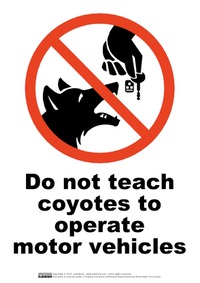When we think of myths, we tend to think of things that are old (or primitive). But we still carry myths with us, and we create new ones all the time. We tell each other "urban myths", we pass on stories that we think have moral value, or that we just think are humorous. Some become part of our cultural lexicon, others disappear. Sometimes we think they are true, sometimes we think they are not, but often it doesn't matter. It's the story that matters, and the emotions that it engenders.
There's a tendency to think that this ability to identify our stories as "fact" or "fiction" is an attribute of modern culture; something that sets us apart from our superstitious ancestors. They didn't realize that these were "just" stories. But the fact is, they were just as aware of it as we are. Myths arise as readily from sudden inspiration as they do from the primordial ooze of creation. We have always known this.
What follows is a story from the forward (written by Barre Toelken) to "Giving Birth to Thunder, Sleeping with His Daughter: Coyote Builds North America" by Barry Lopez (New York: Avon books, 1977, pp. xi-xii).
On the Warm Springs Indian Reservation in central Oregon, some people tell a story about a wandering anthropologist who came across a coyote caught in a trap.
"Please let me out of this trap; if you do, I'll give you lots of money," the coyote said.
"Well, I'm not sure. Will you tell me a story too?" asked the professor.
"Sure I will; I'll tell you a real, true story, a real long one for your books."
So the anthropologist sprung the trap, collected a big handful of bills from the coyote, and then set up his tape machine. The coyote sat, rubbing his sore legs, and told a long story that lasted until the tape ran out. Then he ran off.
The anthropologist went home and told his wife about what happened, but she wouldn't believe him. When he reached in his pocket to show her the money, all he came out with was a handful of fur and dirt.
And when he went to play his tape for the other professors, all that was in the machine was a pile of coyote droppings.
Humans are always changing, whether "modern" or "traditional". And our stories change with us.

